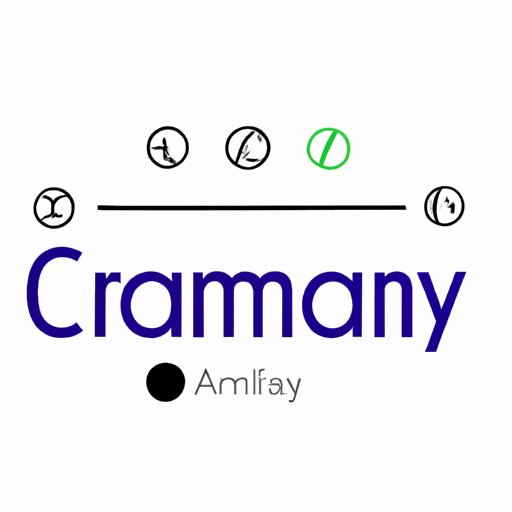
Introduction
As writers, it’s crucial to understand the importance of proper grammar, especially when it comes to using commas correctly. While it may seem like a small detail, comma usage can significantly impact the clarity of a sentence. One of the most debated topics in the writing world is whether to use a comma before the conjunction “and.” In this article, we will explore this age-old debate and provide a comprehensive guide on comma usage before “and.”
To Comma or Not to Comma? The Age-Old Debate Surrounding the And Conjunction
The debate over whether to use a comma before “and” has been around for centuries. Historically, writers believed that using a comma before “and” was unnecessary because it interrupts the sentence’s flow. However, as times have changed, so too has the attitude towards commas before “and.”
Today, many writers argue that using a comma before “and” can help clarify a sentence’s meaning. Others argue that overusing commas can make a sentence cumbersome and unnecessary. Despite the debate, it’s important to understand how to use a comma before “and” correctly.
The Importance of Understanding When to Use a Comma Before ‘And’
Punctuation plays a vital role in the clarity of a sentence. Using the correct punctuation can make a sentence easier to read and understand. When it comes to using a comma before “and,” it helps to clarify the relationship between the two connected clauses.
Using a comma before “and” can help distinguish whether two phrases are part of a list or two separate ideas. Additionally, it can help to avoid confusion and clarify the sentence’s intended meaning. On the other hand, not using a comma before “and” can lead to misunderstandings and ambiguity.
The Ultimate Guide to Comma Usage Before ‘And’
To help you understand whether you need a comma before “and,” here’s a comprehensive guide on when you should (and shouldn’t) use it.
1. Use a comma before “and” when connecting two independent clauses.
Example: She loves to read books, and he loves to write them.
2. Don’t use a comma before “and” when connecting a dependent clause with an independent clause.
Example: After she finished her work, she sat down and read a book.
3. Use a comma before “and” when connecting three or more items in a list.
Example: I need to buy apples, oranges, and bananas.
4. Don’t use a comma before “and” when connecting two things forming a single, complex idea.
Example: We enjoyed the movie and dinner afterward.
The Top 5 Mistakes People Make When Using a Comma Before ‘And’
Now that we’ve covered the essential rules for comma usage before “and,” let’s look at some common mistakes people make when using it.
1. Using a comma before “and” too often, even when it’s not necessary.
2. Not using a comma before “and” when it’s necessary, resulting in confusion.
3. Using a comma before “and” when the conjunction is used to connect two verbs.
4. Using a comma before “and” when the conjunction connects two phrases, and the second phrase is a dependent clause.
5. Forgetting to use a comma before “and” when connecting three or more items in a list.
Breaking Down the Rules: When to Use and When to Skip the Comma Before ‘And’
There are times when using a comma before “and” is more challenging to decide. Let’s take a look at some complex situations and how to determine whether to use a comma.
1. Appositives: Use a comma before “and” when you’re connecting two appositives to the same noun.
Example: My friend, a teacher, and her brother, a lawyer, will attend the wedding.
2. Conjunctive Adverbs: Use a comma before “and” when a conjunctive adverb connects two independent clauses.
Example: She finished her work; however, he kept working, and he ended up finishing first.
3. Contrast: Use a comma before “and” when you’re contrasting two ideas.
Example: She was happy, not sad, and left the party.
Grammar Police: Investigating ‘And’ Comma Usage in Everyday Writing
Let’s put our knowledge to practice and analyze some examples of comma usage before “and” in everyday writing.
Example 1: I enjoy reading writing and listening to music.
In this example, the absence of a comma before “and” makes it unclear whether the speaker enjoys reading and writing and listening to music or reading about writing and listening to music.
Example 2: He went to the concert with Amy, a friend, and her brother.
The comma before “and” clarifies that Amy and her brother are separate people and not different ways to refer to the same person.
Example 3: His hobbies include cooking, hiking, swimming and playing basketball.
The absence of a comma before “and” in this example creates ambiguity about whether “swimming and playing basketball” is one activity or two.
The Influence of Punctuation on Clarity: A Case Study on the ‘And’ Comma
To understand the impact of comma usage before ‘and,’ let’s look at a case study. The sentence “I ate breakfast, and lunch with my friends” can be interpreted in two ways. The first interpretation is that the speaker ate breakfast and then had lunch with their friends. The second interpretation is that the speaker ate breakfast with their friends and then had lunch with them as well.
By adding a comma before “and” in the second interpretation, the sentence’s intended meaning becomes clearer.
Conclusion
In conclusion, understanding proper comma usage before “and” is crucial in maintaining clarity and proper punctuation in writing. While the debate on comma usage before “and” continues, following the rules outlined in this article can help you avoid the most common mistakes and improve the readability of your sentences. Remember, punctuation is an essential aspect of writing that should not be overlooked.





